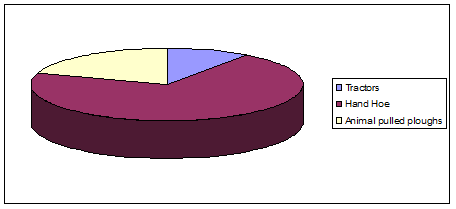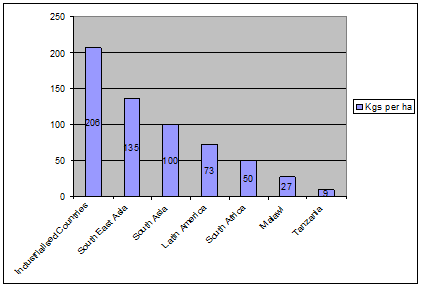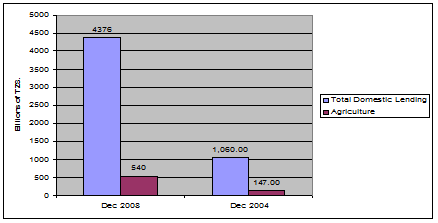Poverty reduction initiatives continue questionable
Adv. Armando Swenya and Martina M. Kabisama (SAHRiNGON Tanzania Chapter); Adv. Clarence KIPOBOTA (LEDECO Advocates)and Jaba Shadrack (Asst. Lecturer, School of Law, University of Dar es Salaam)
Since early 2000s, the United Republic of Tanzania signed and therefore committed itself to implement the eight MDGs. Implementation of these Millennium Development Goals has been made at different levels by formulating and adopting initiatives and strategies aimed at reducing poverty and to improve living standards. These initiatives include the adoption of the National Strategy for Growth and Reduction of Poverty (NSGRP) popularly known as “Mpango wa Kukuza Uchumi na Kupunguza Umasikini Tanzania (‘MKUKUTA’)”, this is mainly for Mainland Tanzania and Poverty Reduction Strategy for Zanzibar popularly known as “Mpango wa Kupunguza Umaskini Zanzibar (‘MKUZA’. Other initiatives for poverty reduction in Tanzania includes Development Vision 2025 (for Mainland Tanzania), Vision 2020 (for Zanzibar), Kilimo Kwanza (Agriculture first) and The Five Years Development Plan 2011/2012-2015/2016. These strategies were mainly adopted to promote growth and reduce income poverty among Tanzanians, also to enhance social wellbeing, the quality of life, governance and accountability.
Thus, this report makes analysis of challenges that Tanzania face in implementing the adopted initiatives against causes for [the] challenges and suggesting alternative solutions to be taken in reducing or eradicating poverty in Tanzania.
Economic Background in Tanzania
The Tanzania Gross Domestic Product (GDP) experienced a slight increase between 1998 and 2008. Per capita GDP increased from USD 323 in 2001 to USD 440 in 2008. Despite the slight GDP growth recorded, the country’s poverty margin is still enormous as about 75% of Tanzanians are poor farmers living in rural areas. Again, 1/3 of Tanzanians still live below the basic need poverty line i.e. spend less than 1 USD per day. Generally, poverty rates is higher in rural areas (37.6%) compared with large cities like Dar es Salaam (16.6%).
Poverty Reduction Initiatives
The government of Tanzania has undergone different policies including the NSGRP, popularly known as MKUKUTA was approved by the Cabinet in February 2005 for implementation in five years. Essentially, the MKUKUTA strategy is designed in three clusters, namely MKUKUTA I, II and III. The MKUKUTA clusters’ envisaged outcomes are:
- Growth and reduction of income poverty;
- Improvement of quality of life and social wellbeing; and
- Good governance and accountability.
The MKUKUTA is informed by Vision 2025 and committed to the achievement of the Millennium Development Goals (MDGs). The MKUKUTA aims at fostering greater collaboration among all sectors and stakeholders. It has mainstreamed cross-cutting issues i.e. gender, environment, HIV/AIDs, disability, children, youth, elderly, employment and settlements. The strategy seeks to deepen ownership and inclusion in policy making processes, paying attention to address laws and customs that retard development and negatively affect vulnerable groups. It requires increased resources and the national budget be aligned to MKUKUTA with direct links to the public expenditure review.
Rudimentary Agriculture
The Tanzania agriculture sector is dominated by small scale farmers. About 70% of farming is dependent on hand hoes, 20% on ploughs, and only 10% on tractors. Notwithstanding the exposed weakness, the agriculture sector has been identified as a growth driver or the backbone of Tanzanian economy.
Tanzania has diverse climatic zones and large size of arable land potential for crops cultivation, livestock and forestry products and sufficient water bodies for irrigation. Thus, given agriculture sector’s role in supporting the rural poor and in reducing malnutrition, if prioritized, it would have been a driving force in lifting Tanzanians out of poverty.
The Kilimo Kwanza Strategy
The Kilimo Kwanza initiative is a green revolution strategy that was launched in August 2009. Basically, it aims at spearheading government efforts in bringing about Agriculture revolution in the country.
Basing on contribution to the economy, agriculture is one of the leading sectors in Tanzanian economy. It contributes substantially to the GDP to about 1/5 of foreign earnings and support livelihoods of more than 2/3 of the population.
3.1. Ten Pillars of Kilimo Kwanza
The Kilimo Kwanza was designed to be implemented on the basis of ten pillars namely; (i) political will to push agricultural transformation, (ii) enhanced financing for agriculture, (iii) institutional reorganisation and management of agriculture, (iv) paradigm shift to strategic agricultural production, (v) land availability for agriculture, (vi) incentives to stimulate investments in agriculture, (vii) industrialisation for agricultural transformation, (viii) science, technology and human resources to support agricultural transformation, (ix) infrastructure development to support agricultural transformation, and (x) mobilisation of Tanzanians to support and participate in implementing Kilimo Kwanza.
The Kilimo Kwanza policy vision is to achieve agricultural development through; policies and institutional reforms, infrastructure development especially rural roads, use of modern technology, extension services, irrigation systems, market access, reform of the land laws and advocating for investment in agro-processing sector/industry.
3.2. Challenge Facing Kilimo Kwanza
3.2.1 Rudimentary Agriculture
Agriculture is still dominated by small scale farming. About 70% of farming is dependent on hand hoes, 20% on ploughs, and 10% on tractors. Notwithstanding the exposed weakness, the agriculture sector has been identified as a growth driver.
NB: see, item 2.3.8 (p.15, above)
Fig 1: Distribution of Equipment Used in Agriculture in Tanzania

Source: KILIMO KWANZA, Annual Policy Dialogue, Dar es Salaam, November, 2009
3.2.1 Poor Agricultural Technology
Low level of technology, excessive reliance on rain-fed agriculture, insufficient agricultural extension services, low labour productivity, deficient transportation and marketing infrastructure and facilities are the major constraints impeding rapid growth of the sector. Tanzania uses only 9Kg fertilizer per hectare and only 10% of farmers use improved seeds.
Again, the total Livestock population reared by smallholders in Tanzania is 37.06 million of which 18.8 million are cattle, 13.1 million goats, 3.56 million sheep and 1.6 million pigs. The poultry population is estimated at 33.3 million. The current challenges in the sector include animal diseases, poor infrastructure and lack of reliable markets, investments and processing industries.
Fig 2: Quantities of Fertilizers Consumptions in Some Selected Countries Compared with Tanzania

Source: KILIMO KWANZA, Annual Policy Dialogue, Dar es Salaam, November, 2009
3.2.4. Limited Capital and Access to Financial Services
Farmers engaging in Kilimo Kwanza initiative face the problem of financial capital; this is due to hierarchical loan processing among financial institutions. Farmers fail to access loans from financial institutions, especially banks, due to difficult conditions and exploitative loan interest rate.
Fig. 3: Banks – Domestic Lending from Dec 2004 - 2008 (Billions of TZS)

Source: KILIMO KWANZA, Annual Policy Dialogue, Dar es Salaam, November, 2009
3.3. Indicators for the Failure of the Kilimo Kwanza Initiative
- Low productivity of land, labour and other inputs.
- Underdeveloped irrigation schemes.
- Inadequate agricultural technical support services.
- Poor rural infrastructure hindering effective rural-urban linkages.
- Infections and outbreaks of crop, animal pests and diseases.
- Erosion of national resources base and environmental degradation.
- Lack of entrepreneurial skills to turn non-farm activities into viable sources of livelihoods and foreign exchange.
- Land conflicts due to poor enforcement of land laws and policies.
3.4. Proposed Way Forward for Kilimo Kwanza
Productivity and growth in agriculture may be boosted by:
- Improvements of rural road networks and irrigation infrastructure, including rain water harvesting;
- Improvements of storage facilities for agricultural crops and livestock products;
- Assistance of farmers in identifying reliable markets;
- Strengthening the capacity of the Strategic Grain Reserve to buy and store sufficient grains consistent with national food requirements;
- Ensuring timely availability of inputs for arable agriculture and livestock farming, including improved seeds, fertilizers, agro-chemicals and veterinary medicines, and to ensure that the Agricultural Input Fund is sufficiently funded;
- Giving priority in the allocation of farm implements and other inputs to the major food crop production regions i.e. Mbeya, Ruvuma, Rukwa, Iringa, Morogoro and Kigoma;
- Identifying and surveying land for large-scale food crop farming so as to take advantage of existing opportunity in both local, regional and world markets’ demands;
- Supporting research institutions to develop improved/genetic-modified seeds and encourage other institutions to scale-up seed production;
- Reduction of unsustainable forest harvesting;
- Establishing or reviving agro-processing industries, with private sector participation;
- Improving access to credit and fast-track setting up of a special window for lending to agricultural ventures through the Tanzania Investment Bank (TIB); and
- Establishment of Agricultural Development Bank.
Recommendations and Concluding Remarks
Tanzania is endowed with abundant natural resources but lacks mechanisms for utilizing them effectively for micro and macro development. Invitation to foreign and local companies to invest in key economic sectors is yet to yield expected results, for instance, incentives and tax evasions are so high. Therefore, little is obtained to enhance the national income. The government is therefore urged to diversify the economy and find more viable and alternative sources of revenues for economic development.


